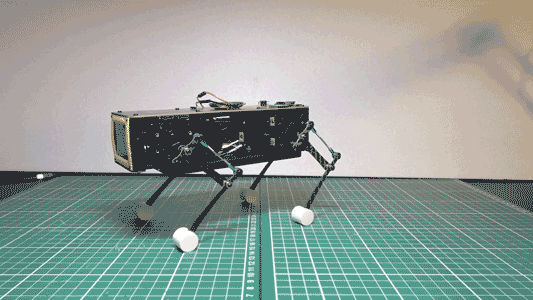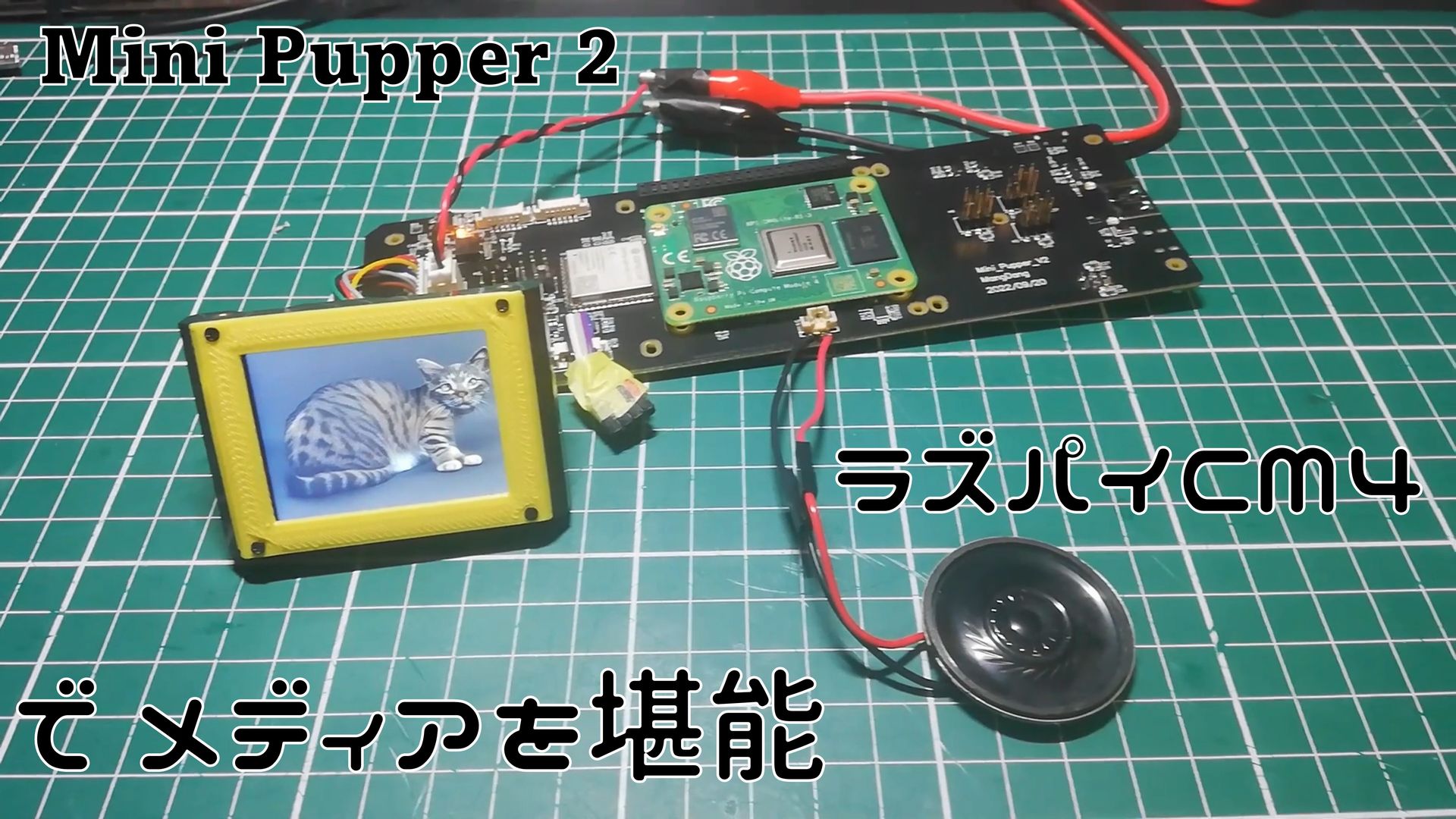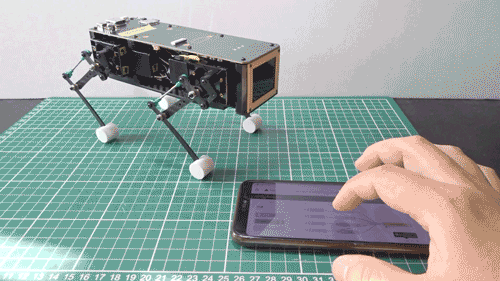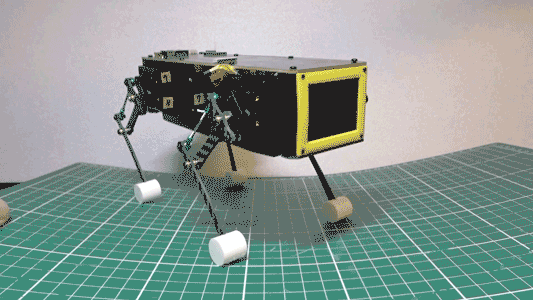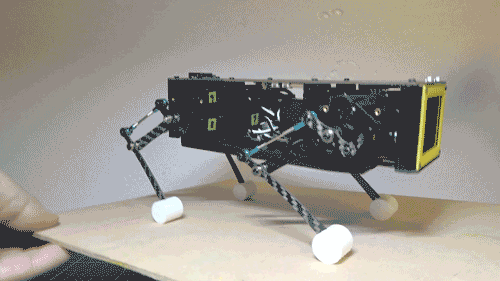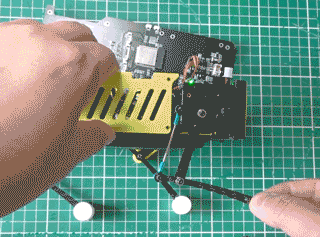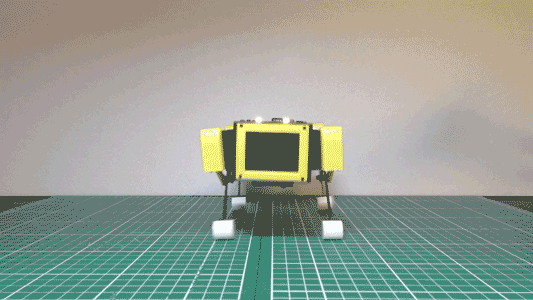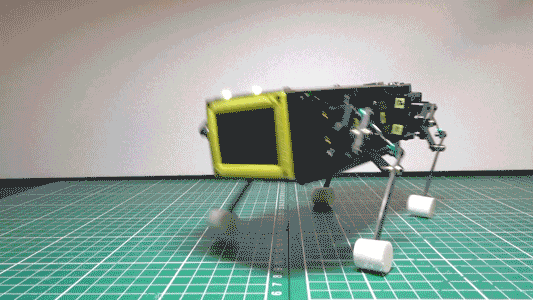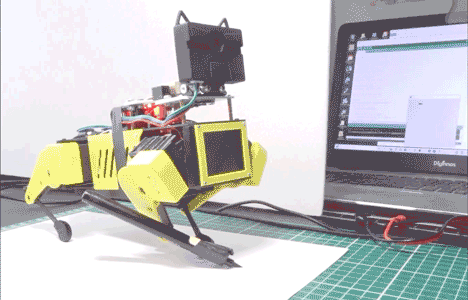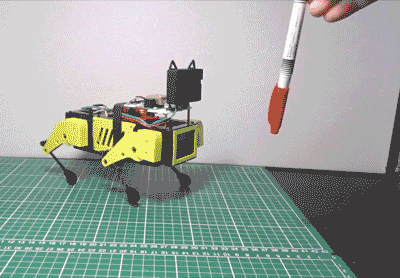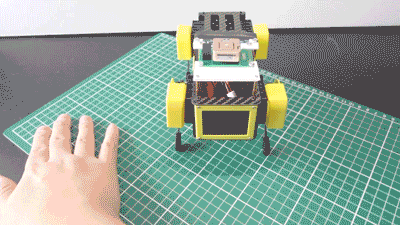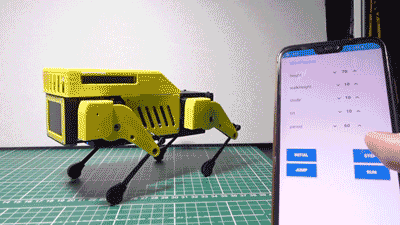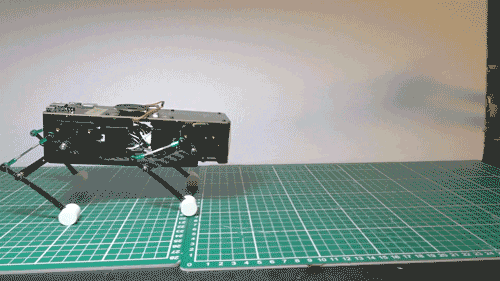
ミニぷぱ
次期モデル Mini Pupper 2 ラズパイCM4で足座標指定
前回はラズパイ CM4で直接サーボ角度を指定してミニぷぱ動作を楽しみました。 https://homemadegarbage.com/minipupper2-08/ ここではラズパイ CM4で足の座標を指定しての動作を楽しみました。 ...
次期モデル Mini Pupper 2 ラズパイCM4でサーボ角度指定
前回はミニぷぱ2でディスプレイ表示とスピーカによる音声再生を楽しみました。 https://homemadegarbage.com/minipupper2-07/// また前々回はRaspberry Pi Compute Module 4 (CM4) からESP32に...
次期モデル Mini Pupper 2 ラズパイCM4でメディアを堪能
前回はRaspberry Pi Compute Module 4 (CM4) をミニぷぱ基板に搭載してESP32との連動やAlexa連携を楽しみました。 https://homemadegarbage.com/minipupper2-06/ ここではミニぷぱ2基板上でCM4に接続されたデ...
次期モデル Mini Pupper 2 に Raspberry Pi Compute Module 4 を搭載
これまでは次期モデル Mini Pupper 2 をESP32のみで楽しんでまいりました。 前回はより製品版に近いとされる基板の動作を確認しました。 https://homemadegarbage.com/minipupper2-05// Mini Pupper 2...
次期モデル Mini Pupper 2 新規基板を味見
前回はMini Pupper 2の初期サンプル基板搭載の6軸IMUセンサ QMI8658C の値を取得して、平行姿勢制御を楽しみました。 https://homemadegarbage.com/minipupper2-04// 今回はより製品版に近い仕様であろう新規基...
次期モデル Mini Pupper 2 でIMUセンサを堪能
前回はサーボのトルクフィードバックやポジションフィードバックを味見しました。 https://homemadegarbage.com/minipupper2-03/ ここでは毎度やるといっていたMini Pupper 2 搭載のIMUの検証をやっとこ実施しましたので報...
次期モデル Mini Pupper 2 で初級ハプティック体験
前回はMini Pupper 2 で動作バリエーションによるダンスを楽しみ、 汎用性の高いコントロールシステムの作成を実施いたしました。 https://homemadegarbage.com/minipupper2-02 ここではサーボモータのトルクフィードバック...
次期モデル Mini Pupper 2 でダンス
前回は提供いただいた新モデル Mini Pupper 2 の初期サンプルをArduino IDEで動作開発できるようにいたしました。 https://homemadegarbage.com/minipupper2-01 ここでは更に動作のバリエーションを増やしてダンスに挑戦いたしました。...
次期モデル Mini Pupper 2 の初期サンプルを味わう
なんとロボット犬 ミニぷぱの新モデル Mini Pupper 2 の初期サンプルを提供いただけました! ここでは前機種との違いを実感しながら Arduino IDEで動作させるところまで記載いたします。 https://homemadegarbage.com/minipupper01/ ...
ロボット犬『Mini Pupperミニぷぱ』で 書道
これまでミニぷパに色々な動作や機能を実装し楽しんでまいりましたが、 ついに字を書けるようになりました! 動作 早速 凛々しい書道スタイルをご覧ください。 ロボット犬が文字を書く pic.twitter.com/0UGeUNsNR1 — HomeMadeGarba...
ロボット犬『Mini Pupperミニぷぱ』を AIカメラ HuskyLens で堪能
前回は9軸 IMUセンサ BNO055を用いてミニぷぱ制御を楽しみました。 https://homemadegarbage.com/minipupper11/ ここでは更に AIカメラ HuskyLensを追加して ミニぷぱを賢くしちゃいます。 AIカメラ ...
ロボット犬『Mini Pupperミニぷぱ』を BNO055で姿勢制御
前回まではラズパイ4でミニぷぱを楽しみました。 https://homemadegarbage.com/minipupper10/ ここではまたマイコンによる制御に立ち戻って新たなIMUセンサを楽しみます。 BNO055 以前はコントロールにATOM Matri...
ロボット犬『Mini Pupperミニぷぱ』Pythonでモーション記述
前回はミニぷぱ正規の構成でラズパイ4にRaspi OSとNode-REDを導入して動作を確認いたしました。 https://homemadegarbage.com/minipupper09/ ここでは、動作モーションを増やしてのコントロールを検討します。 ...
ロボット犬『Mini Pupperミニぷぱ』ラズパイ4 Node-REDで味見
前回はATOM Matrixを用いて ミニぷぱの動作を楽しみました。 https://homemadegarbage.com/minipupper08// ここでは正規のラズパイ4と専用基板を用いて ミニぷぱを動かせるようにします。 ミニぷぱ専用基板 以前 ミニ...
ロボット犬『Mini Pupperミニぷぱ』ATOM Matrix で動作再検討
前回はコントローラにATOM Matrixを採用してIMUセンサによるバランス制御を実現しました。 https://homemadegarbage.com/minipupper07/ ここではさらに動作の検証を進めましたので報告いたします。 バク転 ↑この...
